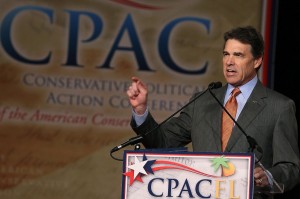Perry Wants To Beef Up Domestic Energy Extraction; Roll Back EPA Regs
-
Scott Detrow
Texas Governor Rick Perry heads to Pittsburgh Friday, where he’ll deliver what’s being touted as a major energy speech.
The Republican presidential candidate leaped to the front of the GOP field when he entered the race this summer, but a string of middling debate performances have slowed his momentum.
What will Perry talk about? An op-ed he published in the New Hampshire Union Leader offers some clues:
As President, I will bring an “all-of-the-above” strategy to increasing our energy production, using all of our natural resources — conventional and renewable, on-shore and offshore, including oil, gas, wind, solar, coal and nuclear. I will begin by immediately authorizing the release of some federal lands and waters for energy development, so we can start creating good jobs in the energy sector as soon as possible.
We can create hundreds of thousands of jobs and increase our oil output by 25 percent if we fully develop oil and gas shale formations in the Northeast, mountain West and Southwest. I also support drilling in Alaska’s Arctic National Wildlife Refuge coastal plain (ANWR), offshore expansion in the Beaufort and Chukchi Seas, and development of the National Petroleum Reserve in Alaska, all of which would maintain the Trans-Alaska Pipeline System. This will create more than 185,000 U.S. jobs.
Perry also wants to return to pre-BP Oil Spill offshore drilling levels in the Gulf of Mexico, and roll back EPA standards. “If the EPA’s emissions regulations go into effect as scheduled, they could cost America 1.65 million jobs by 2020, while dramatically increasing average U.S. electricity prices,” he writes.
We’ll provide full coverage of Perry’s speech, and what his plan would mean for energy extraction in Pennsylvania, on Friday.

















